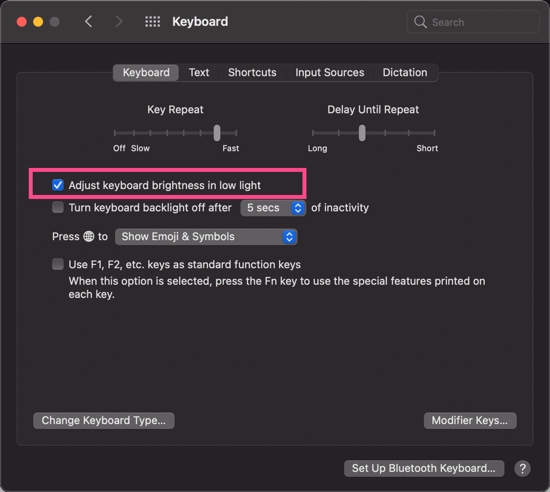

Step 3: Here, you can adjust the brightness slider for your liking.

Step 2: Go to the Display menu in the System Preferences section. Alternatively, you can open the System Preferences using the Spotlight Search (Command + Space) menu. Step 1: Tap on the little Apple icon at the upper left corner and select System Preferences. In that case, you can manually adjust the screen brightness from the Mac Settings menu. If you are using any other third-party keyboard for your Mac desktop, then you won’t be able to see the same options as the above.
#Screen brightness mac system preferences pro#
If you own a MacBook Pro with a Touchbar, you can use simply slide the drag the sun-like icon to adjust the brightness of the display. Adjust the option based on your preference. Upon pressing the keys, you will find the brightness overlay appearing on the Mac screen. The brightness keys are usually represented by the Sun logo on them. For desktop Mac users, you will find the same options on the F14 and F15 keys of the Apple keyboard to change the screen brightness. If you are using the MacBook then you can use the F1 and F2 keys to manually decrease and increase the brightness respectively. Adjust Mac’s Screen Brightness Manually and Automatically Use Keyboard Keys We will also talk about the trick to change the screen brightness of your MacBook using the Terminal commands. In this post, we are going to talk about several ways to adjust the screen brightness of your Mac manually and automatically. macOS also offers Energy Saver option which changes screen brightness based on the power delivery and battery percentage. The brightness adjustment options vary based on different Macs and third-party keyboards. I usually set it to auto-mode as the system automatically sets the brightness bar based on the environment around. Do they work? Exit Safe Mode (just restart your Mac normally) and test your problem again.MacOS comes with the ability to adjust screen brightness manually and automatically.

Click Continue in Safe Mode and then release the Shift key.Select your startup disk, e.g., Macintosh HD.Press and hold the power button until the startup options window appears.Keep holding the Shift key until you see the login screen.Restart your Mac and immediately press and hold the Shift key.And wait for your Mac to power off completely. Note: You may go to the Apple menu > About This Mac to figure out if you have a Intel-based or Apple silicon Mac. Simply restarting your Mac in Safe Mode may help you fix your problem. Boot into Safe Mode, test your problem, leave Safe Mode and test your problem again. If resetting NVRAM does not work, you may want to reset the SMC to see if this resolves. Then try to adjust your brightness to see if it starts working. Then release the keys after the second startup sound or the Apple logo appears and disappears for the second time. Keep holding these keys for about 20 seconds.Turn on your Mac and immediately press and hold these four keys.On your keyboard, locate these four keys: Option, Command, P, and R.You can check this by going to the Apple menu > About This Mac. Note: You can reset NVRAM if your computer is an Intel-based Mac. NVRAM (nonvolatile random-access memory) stores your display settings. Resetting NVRAM or PRAM can fix your problem.


 0 kommentar(er)
0 kommentar(er)
